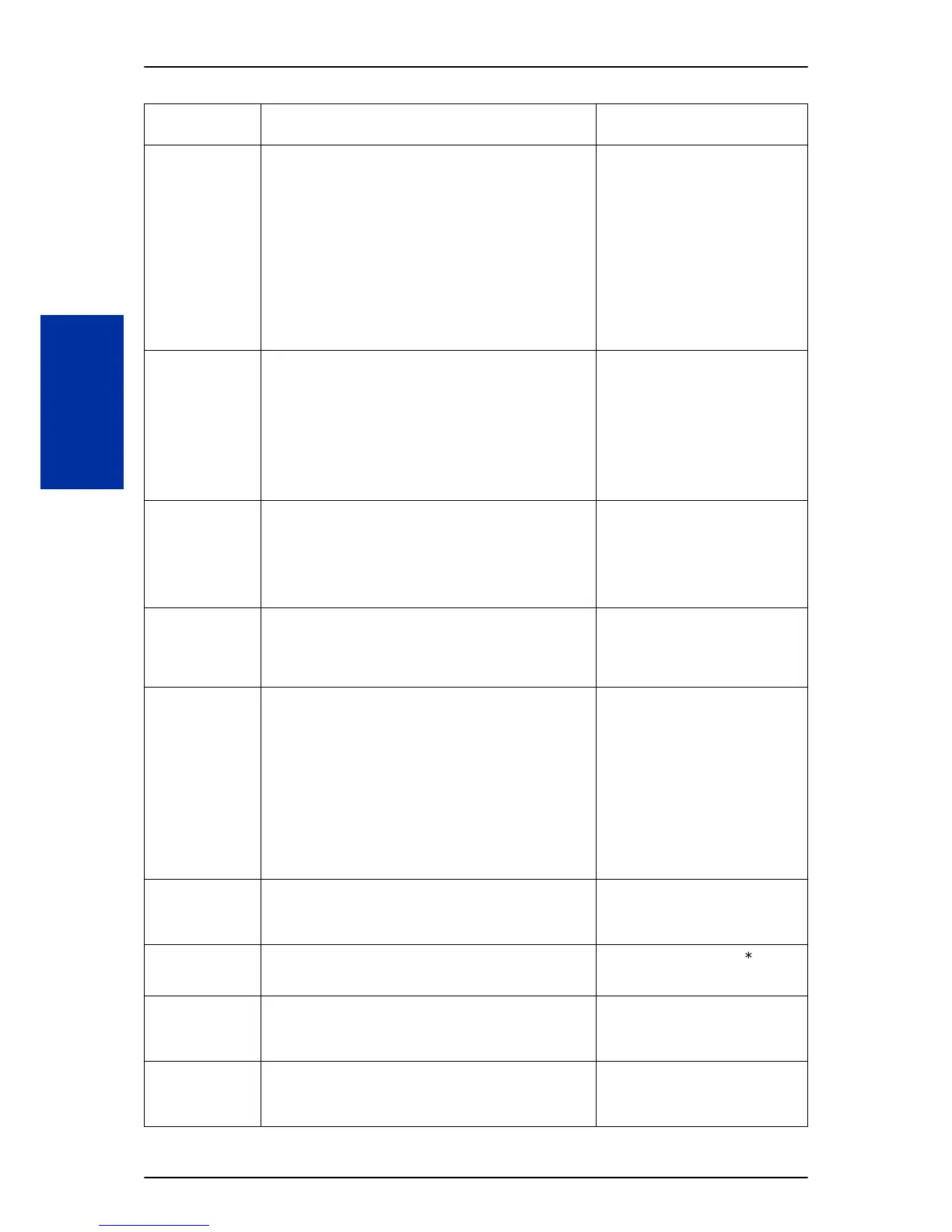Program Num-
ber
Program Name Default
16-01-02 Department Group Calling Cycle
This program is used to define what happens when the depart-
ment group pilot number is called.
If this is set to priority, every new call to the pilot number will
search an idle phone in order of the extensions priority (set in
PRG 16-02-02). The lower the number the higher the priority
for that extension. For example, if two phones are idle and one
phone has a priority of a 1 and the other phone has a priority
of a 2, the phone with the priority 1 will receive the call.
If this is set to circular, every new call to the pilot number will
cycle to an idle extension in a circular order. The priority of the
extension is not used.
When using a department group for Voice Mail, this program
must be set to (0) priority.
0 = Normal Routing (Priority)
1 = Easy UCD routing (Circular)
(default)
0
16-01-04 Department Group Hunting Mode
This program sets what happens when an unanswered call to
a department group pilot number reaches the last member of
the group.
If this is set to (0), once the last extension is called the hunting
will stop.
If this is set to (1), once the last extension is called the hunting
will continue to look for an idle member to receive the call.
NEC recommends setting this to (1) Circular when using a de-
partment group for Voice Mail.
0 = Last extension is called and hunt-
ing stops
1 = Circular (Hunting will continue)
(default)
0
16-01-10 Department Group Enhanced Hunting
This program defines the conditions by which calls to the pilot
number will hunt to the available extensions in the group.
For a description on all the hunting types, see the Department
Group feature.
NEC recommends setting the Voice Mail department group as
(3) Busy/No Answer.
0 = No Hunting
1 = Hunting when Busy
2 = Hunting when Not Answered
3 = Hunting when Busy/No Answer
(default)
0
16-02-01
*1
Department Group Assignment for Extensions
This program is used to assign the extensions to the depart-
ment group.
When using a department group for Voice Mail, you must have
licenses to cover every extension assigned.
1 ~ 32
(default)
1
16-02-02 Department Group Priority Assignment
This program sets the extensions priority within the department
group. The lower the number that is assigned the higher the
priority.
When using a department group for Voice Mail, the lowest
voice mail port must have the lowest priority number in the
group.
For example if the VM had system ports 65 ~ 68 and used ex-
tensions 165 ~ 168 the following would be the assignment.
Ext 165 = Priority 1
Ext 166 = Priority 2
Ext 167 = Priority 3
Ext 168 = Priority 4
1 ~ 999
Refer to Programming Manual.
Refer to Programming Manual.
45-01-01 Voice Mail Department Group Number
When using Centralized Voice Mail in an SL Net network, this
program MUST be left unassigned in all sites that will access
the VM.
0 = No Voice Mail Assigned
1 ~ 32 = Department Group 1 ~ 32
(default)
0
45-01-07
*1
Centralized Voice mail Pilot No.
All sites using the Centralized Voice Mail must assign the pilot
number that is assigned in PRG 11-07-01.
Maximum of 8 digits (0 ~ 9,

